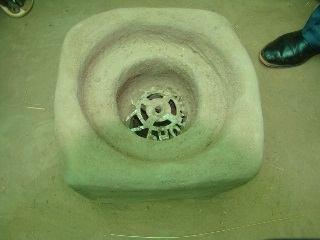South Sudan urged to adopt renewable energy potentials
January 4, 2017 (JUBA) – A donor-led shift from total reliance on diesel to renewable energy in South Sudan can deliver short-term humanitarian cost savings while creating a longer-term building block for peace in the form of a clean energy infrastructure, a new report shows.

Despite its secession from Sudan in 2011, war-torn South Sudan has relied revenues from oil and the strong international support.
“This period was powered by diesel generators and little long-term electricity infrastructure was created,” the report notes.
Also, the civil war that began in South Sudan in December 2013 saw a collapse in an economy largely dependent on revenue from oil.
The war has destroyed South Sudan’s limited infrastructure, triggering an economic implosion. What electricity it has—and it is the least electrified country in the world depends entirely on imported diesel to run generators, according to a summary of the report.
Insecurity and hyperinflation have made diesel scarce and created a thriving black market, leading to high energy costs in the region.
According to the new report, the United Nations peacekeeping mission in South Sudan (UNMISS) and international humanitarian operations have a combined budget of over $2 billion per year.
“These operations are almost exclusively diesel powered”, it stressed.
In recent years, it says, renewable energy costs have dropped dramatically and usage has increased accordingly worldwide.
These gains, it adds, have not yet reached South Sudan and other conflict settings.
“As building blocks for peace, these benefits would help expand and diversify South Sudan’s energy sector and contribute to a green pivot to help soften a crippling dependence on fossil fuel,” it notes.
South Sudan, according to the electricity minister, has the lowest electricity consumption per capita in Sub-Saharan Africa compared to Uganda’s current electricity consumption of about 900MW.
However, as of March 2017, Uganda was reportedly exporting 51.1 megawatts (MW) of electricity to Kenya, 14.94MW to Tanzania and 0.27MW to the Democratic Republic of Congo. Also, besides Karuma (600MW) and Isimba (183MW), the landlocked East African country reportedly boasts of many other mini-hydropower plants, which are expected to add between 100MW and 200MW to the national grid.
South Sudan, statistics from African Development Bank (AfDB) show, has the lowest per capita electricity consumption in Africa, with a per capita consumption of between 1 to 3 kWh, compared to an average in Sub-Saharan Africa of 80 kWh. This is reportedly due partly to the underdeveloped energy infrastructure in the young nation, which has been severely impacted by decades of conflict.
According to a 2013 data, only 1% of South Sudan reportedly has access to grid electricity, due to the low level of power generation and the insufficient distribution network. Also, only 4% of urban areas are reportedly connected to power, but these areas are subject to load shedding and forced power outages.
(ST)
